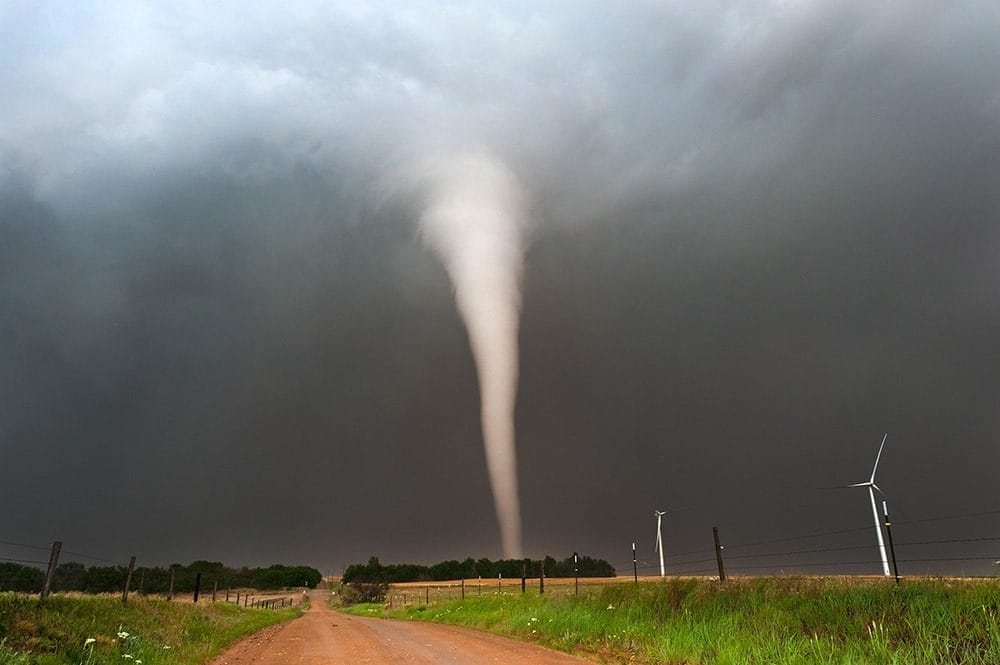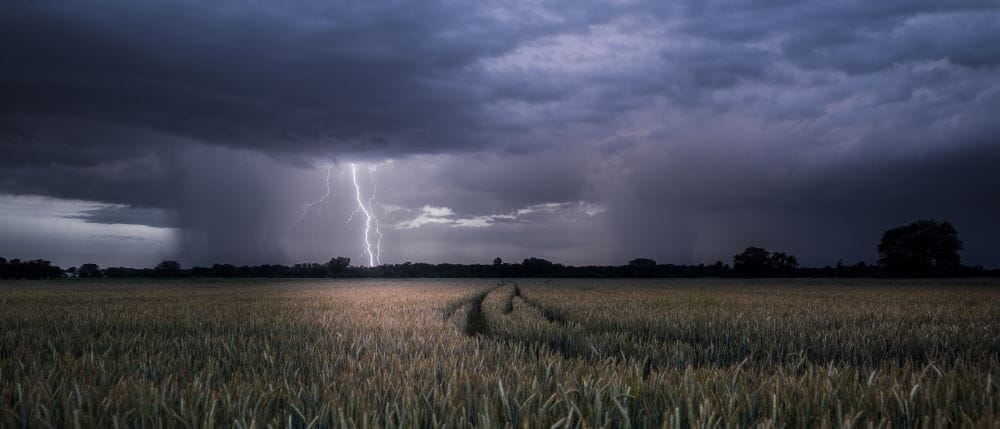Strange Weather Phenomena Part 1
Weather is an intricate dance of atmospheric forces that can sometimes create captivating and perplexing phenomena. From ethereal apparitions to intense natural phenomena, our planet never ceases to amaze with its atmospheric theatrics. While wonderous, these weather events also have the potential for detrimental ramifications to various business sectors. Let’s review these strange weather occurrences that defy our expectations and learn why it is essential for business decision makers to stay aware and prepared for them.
Virga: The Ghostly Precipitation
Virga presents a surreal spectacle in the sky—a visual manifestation of precipitation that never reaches the ground. This captivating phenomenon occurs when moisture in the form of rain or ice falls from clouds but evaporates before it can touch the Earth’s surface. The reason behind this ethereal display lies in the atmospheric conditions where the air underneath a cloud is exceptionally dry, it sucks up the moisture before it can reach the ground.
As rain or snow descends from the cloud base its encounter with dry air causes it to evaporate swiftly. What remains are delicate wisps, resembling the original trajectory of the precipitation before transforming into water vapor. These streaks, sometimes resembling feathery tendrils, showcase the elaborate dance between moisture and air currents high above us.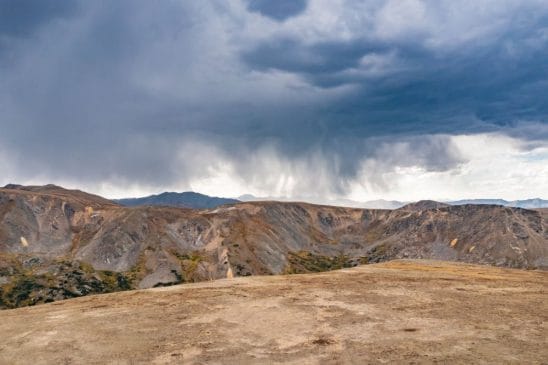
While virga might seem like a mere visual effect, it signifies a significant process occurring within the atmosphere. The energy required for evaporation cools the surrounding air. Occasionally, this cooled air might descend rapidly, resulting in a microburst—a sudden, localized intense downdraft that can lead to a concentrated release of air and water/hail. Despite the grand storms brewing above, the only evidence at ground level might be these elusive wisps of virga drifting through the sky, leaving behind an air of mystery and fascination.
While virga itself might not have direct implications on businesses since it doesn’t result in precipitation reaching the ground, its presence can indicate atmospheric conditions that might affect certain industries. Farmers and crop producers might monitor virga as an indicator of dry air, potentially signaling a lack of precipitation. This could prompt irrigation adjustments or drought management strategies. Pilots and airlines might take note of virga for its potential to create turbulence or signal dry air masses, affecting flight paths and altitude considerations. This phenomenon highlights the need for lower atmospheric weather radar coverage to detect low altitude wind events and accurately determine if rain is actually occurring at ground level.
Fujiwhara Effect: Nature’s Hurricane Ballet
The Fujiwhara Effect unveils a mesmerizing interaction when two hurricanes, spinning in the same direction, draw near each other. It’s akin to witnessing a celestial ballet, as these colossal weather systems engage in a captivating dance around a common center.
When hurricanes approach close to each other, their proximity and similar spinning motions initiate a complex interplay. Depending on their relative strengths, various outcomes can arise. If one hurricane significantly surpasses the other in intensity, the smaller storm might orbit around the larger one, eventually merging or being absorbed. Conversely, hurricanes of closer strengths might gravitate towards each other, swirling around a shared center before parting ways or merging into a single, formidable tempest.
The result of the Fujiwhara Effect often leads to the consolidation of these storms into one massive hurricane. This interaction showcases the intricate dynamics of weather systems, highlighting the mesmerizing yet powerful symphony orchestrated by nature. The last time this occurred was in 2017, when storms called Hilary and Irwin crossed paths in the eastern Pacific, off the coast of Mexico.

The Fujiwhara Effect impacts government and businesses in the same way a destructive hurricane might. Organizations involved in disaster management, evacuation, and emergency response must prepare for the intensified impact of merged hurricanes, necessitating robust contingency plans. Increased storm intensity and larger affected areas might lead to higher insurance claims and reevaluation of risk models. Businesses reliant on regions affected by merged hurricanes may experience interruptions in production, transportation delays, and inventory shortages due to damaged infrastructure or heightened risk factors.
Heat Burst: Nature’s Nocturnal Surprise
Imagine the bewilderment of waking up in the dead of night to an abrupt rise in temperature by a staggering 20 degrees within minutes, accompanied by ferocious 80 mph winds. This awe-inspiring but rare event is known as a heat burst—a phenomenon with the potential to dramatically alter the nocturnal landscape.
Heat bursts occur in specific conditions following dying thunderstorms. For this phenomenon to unfold, the storm must be high in the atmosphere while the air beneath it remains hot and dry. As the dying storm releases rain into the arid environment, the water evaporates rapidly, siphoning heat energy from the surrounding air.
This rapid evaporation causes the air to cool and contract, creating a dense parcel of air too heavy to remain aloft. As this air descends, its quick descent compresses it, leading to heating. Ordinarily, moisture continues to evaporate during descent, offsetting some of this heating. However, in a heat burst, all moisture evaporates, resulting in an extremely dense, rapidly warming air mass hurtling toward the ground at high speeds.
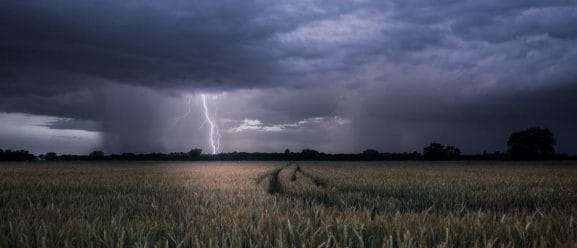
Upon impact, this intense deluge of hot and dry air can dramatically increase temperatures and alter atmospheric conditions for hours. The abruptness and intensity of a heat burst can swiftly alter environmental conditions, affecting various industries and local economies. Intense and sudden temperature increases can impact crop health, leading to heat stress and potentially affecting yields. Businesses in energy production and distribution may experience shifts in demand for cooling systems or electricity as people respond to the sudden rise in temperature. Outdoor event sectors might experience shifts in consumer behavior due to sudden and extreme weather changes.
Haboob: The Formidable Dust Storm
Haboobs stand as nature’s awe-inspiring display of power, and are most commonly observed in regions abundant in hot, dry air and loose particles. These monstrous dust storms materialize from thunderstorm outflow winds, releasing powerful gusts of air or rapidly descending air masses—a process often resulting in microbursts.
As these storms dissipate, they propel strong winds forward, picking up dust, sand, and debris. The accumulated particles create a towering wall that can stretch thousands of feet high and span several miles across the landscape. The sheer force and magnitude of haboobs make them a formidable force of nature.
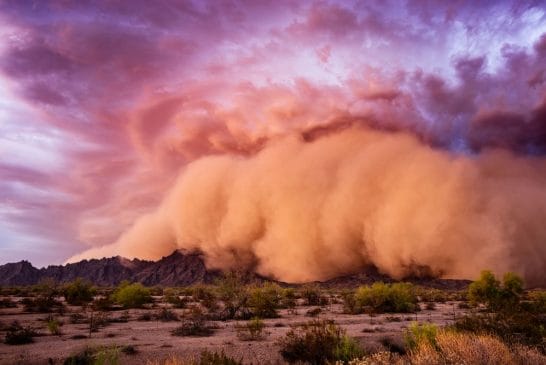
Residents and businesses in regions prone to haboobs are urged to take precautions and seek shelter indoors when these storms loom on the horizon. The swift and massive nature of haboobs underscores the necessity of preparedness and safety measures to minimize their impact on various industries. Road and air travel can be severely disrupted due to reduced visibility and unsafe driving or flying conditions, impacting supply chains and distribution networks. Haboobs can exacerbate respiratory problems and lead to an increase in healthcare demand, particularly for respiratory-related illnesses.
Strange Weather Events Require Accurate Insights
These weather phenomena paint an intricate and captivating picture of nature’s diverse manifestations. From the mysterious allure of virga to the powerful display of haboobs, these occurrences showcase the sheer diversity and wonder of our planet’s weather patterns. However, each of these weather phenomena also can have significant ramifications on various industries, necessitating preparedness, risk assessment, and contingency planning for businesses operating in affected regions or reliant on weather-sensitive activities. Understanding these phenomena enables proactive measures to mitigate potential disruptions and adapt to the dynamic nature of atmospheric conditions. If you’d like to learn how Climavision’s weather technology advancements can better prepare your organization, contact us.


